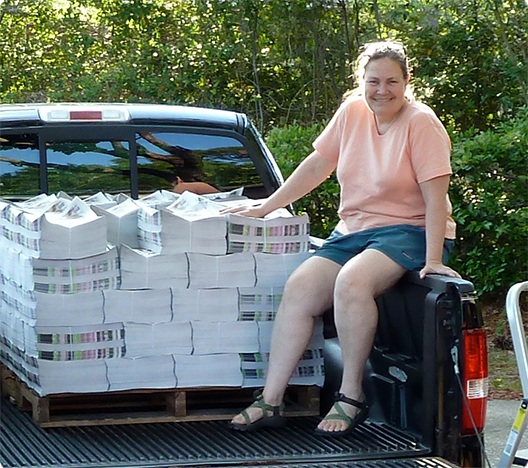Letter from the Editor
(October 2007)
Welcome to the premier issue of Cape Fear’s Going Green!
Have you ever asked yourself these questions: Where does our water come from? Where does our recycling really go? What kind of energy tax credits are available for North Carolinians? How can we promote a healthy garden without pesticides? Paper or plastic? Does it matter if I buy organic produce? How can I keep my pet healthy and active? Would an electric car really work for me?
I know I have. As the reality of our finite resources becomes more obvious each day, it can be hard to know what, if anything, we can do to help sustain our planet and the people on it. That’s why I started this magazine.
Going Green will serve as your guide to eco-friendly activities, products and services in the Lower Cape Fear. We feature people who live and work in the Lower Cape Fear River Basin—the counties of southeastern North Carolina.
We’ll cover a range of topics designed to help you make choices that can save you money, contribute to healthier living for you and your family, and assist you in being kind to our planet.
Over the course of the year we’ll discuss green building and sustainable architecture, water management, alternate energy, eco-friendly products, transportation, organic food and gardening, and ways to enjoy nature.
Profiles of local individuals, groups, businesses and events will show the variety of innovative projects our neighbors are pursuing. We’ll have articles on local plants and animals and the places they live. Business briefs, book reviews, and a calendar of “green” events will suggest where to learn more about topics that interest you. An on-line version of our calendar—the first “green” calendar in the area—will be updated weekly to provide you with the latest information on what’s happening.
We’ll also look at ideas from our sister Green City, Eugene, Oregon, and see what might apply here in Coastal Carolina.
This premier issue’s theme is Green Building. Whether you are building a new home or considering improvements to the one you have, our report on this year’s Solar & Green Tour may give you some ideas for products or features you’d like to have.
In these pages I hope also to explore more subtle questions—those of scale, and possessions, and reusing; sharing resources, the nature of waste, the interconnectedness of our planet’s inhabitants and what really constitutes stewardship of our planet.
Don’t ever doubt that one person or one community can make a difference. You have already started making a difference by reading Going Green.
— Valerie L. Robertson, Editor
October 2007



